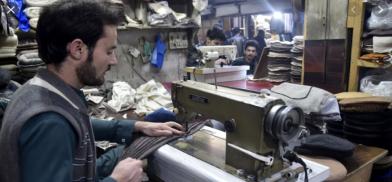Modi's self-reliance doctrine energises dying small-scale industries
Several dying small-scale industries in India are looking at a comeback with Indian Prime Minister Narendra Modi's thrust on Aatmanirbhar Bharat that also focuses on self reliance and import reduction

Several dying small-scale industries in India are looking at a comeback with Indian Prime Minister Narendra Modi's thrust on Aatmanirbhar Bharat that also focuses on self reliance and import reduction. Sentiments are also rapidly changing as the country hopes to register growth in the third quarter of the current financial year.
Sample this.
Firozabad, in Uttar Pradesh, is known for its glass and glassware industry. Thousands of micro units dealing in manufacturing of glass bangles, bottles, artefacts, tumblers besides chandeliers, have suffered for years as cheap imports of these items from China have had a severe impact on their livelihood. However, now with a drastic drop in imports of these items from China, these small manufacturers are re-looking at reviving their businesses.
While they are yet to get their act together, there is a sense of positivity.
"Sentiments have taken a positive turn. While we cannot yet say that things are moving, the sentiment has turned positive and that is critical. There is a sense of exuberance and confidence that they can replace the Chinese made goods," Anil Bhardwaj, secretary general, Federation of Indian Micro and Small and Medium Enterprises (FISME) told India Narrative.
The association has zeroed in on the cluster manufacturing chandeliers. "We are looking at reviving the chandelier makers," he said.
Similarly, in Panipat, many small mink blanket makers had nearly perished, once again for the same reason that they could not withstand Chinese competition.
However, this winter has been a different story for them. The sale of these blankets has been "extremely good" with no competition from the Chinese.
The country's micro small and medium enterprises (MSME) industry is the backbone of the economy.
India Briefing, a platform providing insights on doing business in India noted that the MSME base is the largest in the world after China. "The sector provides a wide range of services and is engaged in the manufacturing of over 6,000 products�ranging from traditional to hi-tech items," India Briefing website said, adding that there are about 63.05 million micro industries, 0.33 million small, and about 5,000 medium enterprises in the country.
Experts said that the Centre's thrust on the �Make in India' project has led to several small-scale businesses dealing in a variety of items such as toys, lights, home decoration items, mobile phone accessories, apparel and footwear among others which have been facing serious competition from Chinese made goods are now set for a revival.
Sources said that domestic orders for such items are also rising.
"The Aatmanirbhar Bharat programme has been just launched, so to expect it will bear fruit is illogical. The programme is robust, it will take some time before results show," an insider said.
Turnover for traders only during the festive season�beginning the festival of Rakshabandhan till December�is estimated at Rs 60,000 crore of which over two-thirds went into the Chinese kitty, the Confederation of All India Traders (CAIT) said.
Last year, there was no import of any item for the festive period from China.
"We have not sourced any item related to the festive season from China this year as we are promoting our own artisans. This has proved to be beneficial for thousands of local craftsmen. Our endeavour is to primarily engage women and women's self-help groups (SHGs) for this," Praveen Khandelwal, secretary general, CAIT said.
However, imports of other critical input items and raw materials from China have not been curtailed to ensure that Indian manufacturers do not face any hurdle.
Jobs data indicate a revival
The Centre for Monitoring Indian Economy (CMIE) data for the month of January showed that the country's unemployment rate fell to 6.5 per cent from 9.1 per cent in December last year. According to the data monitoring think tank, rural unemployment fell from 9.15 per cent in January to 5.83 per cent.
CMIE said that about 12 million additional people were employed in January at 400.7 million as compared to 388.8 million in December last year. This has been the highest since the Covid-19 induced lockdown was imposed in March 2020. Importantly, the rise in January employment trend has compensated for the loss in the past three months.
Caveat
While the economy is showing signs of revival, apprehensions remain. With the rising number of fresh Coronavirus cases in states like Maharashtra and Kerala along with a few more, concerns for a possible second wave of the pandemic have set in.
Delhi has issued a fresh notification making it mandatory for travellers coming in from Maharashtra, Kerala, Chattisgarh, Madhya Pradesh and Punjab to get a Coronavirus test done.
"We understand there is some apprehension but there will be no lockdown though there could be restrictions in movements and meetings," a government source said.
An analyst also noted that due to availability of the vaccine, the spread is unlikely to impact normal life and business as it did last year.
"We have the vaccines now. So it is a very different situation from last year..there is no point in spreading fear," he said.
The MSME sector, which employs about 11 crore people, in India is crucial for job creation. It is also key for economic revival, especially after a shocking 23.9 per cent economic contraction in the first quarter and 7.5 per cent in the second quarter.
(Under an arrangement with indianarrative.com)
(IANS)









Post a Comment